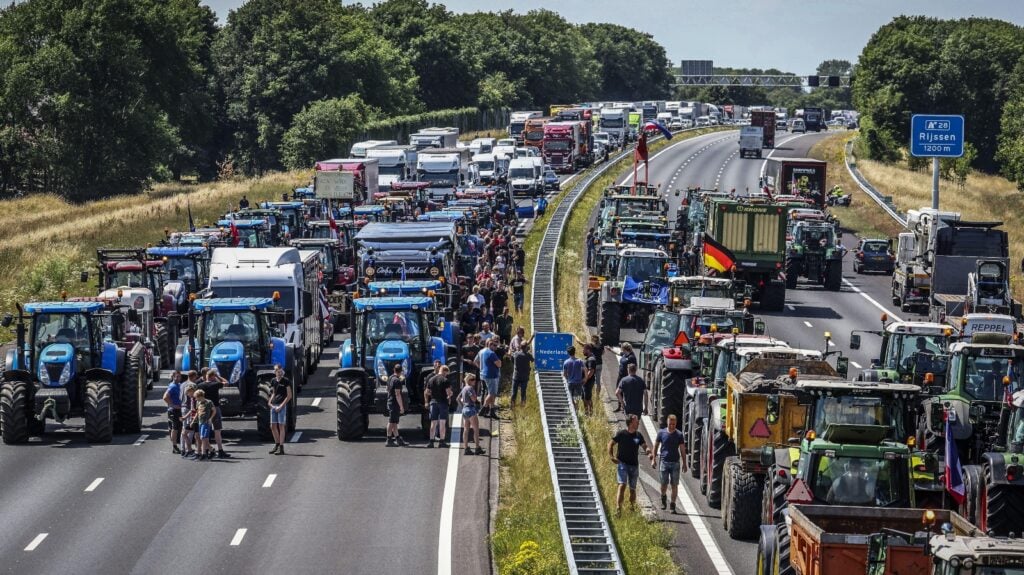Police in the Netherlands responded to Dutch farmers violently protesting government plans to slash nitrogen emissions.
Farmers rode their tractors through the province of Friesland, in the northern Netherlands. The large machines moved to force a barricade of police officers and vehicles out of the way. The “threatening” situation saw one tractor shot at by armed police.
The protest concluded with three arrests for attempted murder and no injuries.
What are Dutch farmers protesting about?
The Dutch government recently unveiled plans to drastically reduce nitrogen oxide emissions.
Deeming the environmental policy as an “unavoidable transition,” the government will impose stringent restrictions on the region’s agricultural sector. The move is part of the 2019 Climate Act to bring greenhouse gas emissions down by 49 percent by 2030.
Pulling in €94.5 billion in exports in 2019, the farming sector is a significant economic string in the Netherlands’ bow. But it is also a major contributor to its environmental impact.
Animal agriculture is responsible for at least 14.5 percent of all greenhouse gas emissions, according to the Food and Agriculture Organization of the United Nations. This makes reducing livestock numbers imperative, particularly for farming-reliant nations such as the Netherlands.
Farmers have previously attempted to reduce their operational emissions in light of the “nitrogen crisis” in the region. The government now wants to see more progress. It acknowledges the struggle ahead for agricultural businesses as they try to align with the new plan.
“Of course, it has enormous consequences. I understand that, and it is simply terrible,” Mark Rutte, Prime Minister of the Netherlands said in a statement. “And especially if they are businesses handed down in the family who want to proudly continue.”
The new reduction targets are ambitious. Many farms will need to produce up to 70 percent fewer emissions. However, figures of up to 95 percent are touted.
The Dutch government has set aside €24.3 billion to finance the realization of the emissions targets.
How will farmers reduce their emissions?
Agricultural business owners are preparing to use less fertilizer and reduce livestock numbers. The latter could see smaller farms forced to close.
Provincial governments have one year to finalize plans for meeting their localized reduction targets.
The Netherlands Agricultural and Horticultural Association (LTO) has called the targets “unrealistic.” It currently represents more than 35,000 farmers, many of which are calling for large-scale demonstrations in The Hague. Small protests have seen farmers driving their tractors in disruptive convoys.
The Paris Agreement calls for emissions to be cut to prevent global warming increasing by more than 1.5°C. In simple terms, this means a 45 percent global reduction of said emissions by 2030.
—
This article was originally published on July 11, 2022. It was updated on November 10, 2022 to include mention of the Food and Agriculture Organization of the United Nations’ research on animal farming and greenhouse gas emissions.






